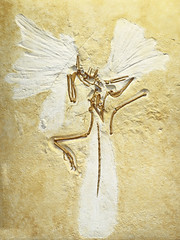![]()
![]()
![]()
Use LEFT and RIGHT arrow keys to navigate between flashcards;
Use UP and DOWN arrow keys to flip the card;
H to show hint;
A reads text to speech;
28 Cards in this Set
- Front
- Back
|
Amniotes and current living examples |
Tetrapods with a terrestrially adapted egg example- birds reptiles |
|
|
Derived characteristics of amniotes |
-amniotic egg -amnion surrounds embryo -chorion surrounds embryo and yolk -yolk sac- nutrients for embryo |
|
|
Reptilia Clade representatives |
Tuaturas, lizards, snakes, crocodiles, turtles and birds |
|
|
Reptilia adaptations |
-dry skin with scales that retard water -amniotic eggs -internal fertilization -3 chambered heart -exothermic |
|
|
Traits that seperate snakes as reptiles |
-feed on animals larger then themselves -lack eyelids and external ears -forked tongue for chemical sensing and touch |
|
|
Lizards that separate them from other reptiles |
-limbs (most) and external ears -across all continents except antartica |
|
|
snakes evolved from ________ |
lizards -a few primitive snakes still burrow -some pythons and boas still have vestigial legs |
|
|
Avis and derived traits for flight |
Birds -feathers -male atrophy testes in off season -endothermic- female one ovary no oviducts -reduction in the number of bones (pneumatic bones) -no teeth (beaks) -no bladder (semisolid urine) |
|
|
ARCHOSAURS |
birds, crocodiles |
|
|
Avis derived traits for power production |
-high metabolic rate -rapid efficent digestion -Large, 4 chamber heart |
|
|
Describe how an air foil works |
Wind flows over the top of the wing faster then the underside this creates a pressure difference causing lift. |
|
|
Oldest bird |

archaeopteryx - 150 mya had feathered wings and scaly skin, curving claws, teeth and fingers |
|
|
What did birds evolve from? |
Probably theropods, a smal carniverous dinosaur that had hollow bones |
|
|
Which amniotes have hair and produce milk? |
Mammals
|
|
|
Derived characteristics of mammals |
-mammary glands that produce milk -hair -high metabolic rate -larger brain in comparison to other vertabrates -differentiated teeth |
|
|
3 major lines of mammals |
-monotremes -marsupials -Eutherians |
|
|
Monotremes |
-only two species -Short beaked Echidna -an anteater -Platypus-lack nipples -only found in Australia and New Zealand |
|
|
Marsupials and Eutherians shared derived characteristics |
-higher metabolic rates -nipples that provide milk -give birth to live young -embryo forms a placenta |
|
|
Placenta |
A structure through which nutrients diffuse into the embryo from the mothers blood |
|
|
Biggest difference between Eutherians and Marsupial embryo development |
In marsupials, the animal is born very early in the development and completes development whild nursing. In eutherians have longer pregnancies and development is completed within the uterus |
|
|
Primates derived characteristics |
-Hands developed for grasping -digits have flat nails -larger brains and short jaws -opposable thumbs -good depth perception |
|
|
Earliest known primates |
-tree dwellers |
|
|
All primates except humans have |
A big toe that is highly seperated from the rest of the toes that allows for better grasping branches with feet |
|
|
Living primate groups |
-Anthropoids - monkeys and apes -lemurs, lorises and bush babies -tarsiers |
|
|
New world monkeys vs old world monkeys |
New world monkeys are only arboreal -old world - have land dwelling and arboreal |
|
|
Humans are considered part of _________ |
Apes in mammals |
|
|
Hominims are distinguished from apes by |
The ability to walk upright (bipedalism) |
|
|
Order of probable ancestors for humans |
Sahelanthropus, Ardipithecus, Australopithecus, Homo |

